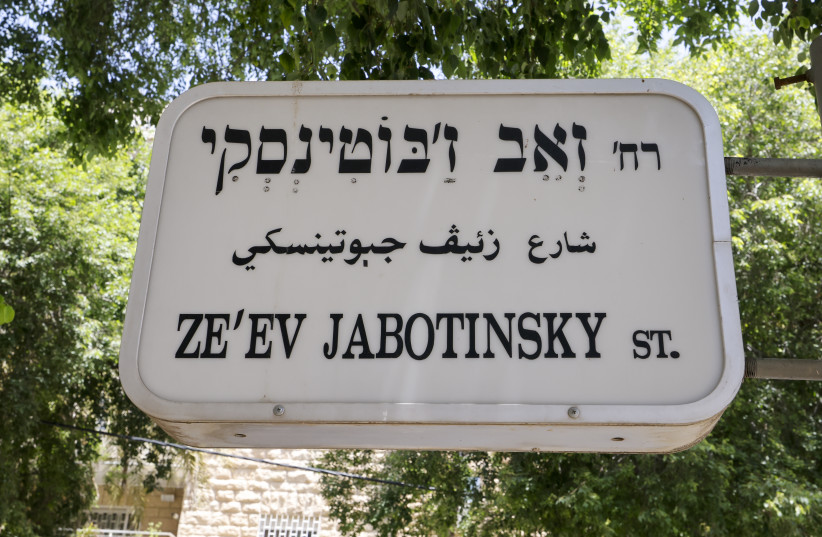Komemiyut. No, it’s not the Soviet agrarian bureau or some other such body that may spring to mind with a title like that. It is actually the Hebrew name for the picturesque Jerusalem neighborhood of Talbiyeh.
Talbiyeh borders the Rehavia neighborhood, the German Colony and along Keren Hayesod Street, and is considered one of the most beautiful neighborhoods in the city.
A bit of history
The neighborhood showcases a rich variety of architectural styles, typical of the different periods of Israel. The lands on which the neighborhood was founded were purchased by the Greek Church in the latter half of the 19th century from villagers around Jerusalem. A Greek priest named Nikophorus Bittasis was particularly involved in these acquisitions, thus the neighborhood of Talbiyeh was named after him: Nikophoria.
In 1921, the Jewish National Fund (JNF) and the Palestine Land Development Company initiated a project to purchase lands in central and western Jerusalem. In 1923, the institutions began constructing the garden neighborhood of Talbiyeh on land adjacent to the Sha’arei Hessed neighborhood.
Most of Talbiyeh was rocky terrain with olive and mulberry trees. Construction in this neighborhood began in the early 1920s when affluent Christian Arab merchants from Bethlehem, Beit Jala, and Ramallah bought land in the area to build private homes or rental properties.

The land was purchased directly from the Greek Church or through a Christian Arab named Constantine Salameh. Salameh bought large plots of land from the Greeks and divided them into smaller plots. He and his family eventually built several villas there, which are among the most beautiful in the neighborhood today.
Originally, Talbiyeh was predominantly Christian. The Arab homeowners included families such as Salameh, Tannous, Khallaq, Jilad, Jamal, and Armenian families like Matossian and Kalbian. Before 1948, a few Jewish families lived in the neighborhood.
Post-1948, following the establishment of the State of Israel and the subsequent Arab-Israeli conflict, the demographic composition of Talbiyeh changed significantly. Many of the original Arab residents fled or were displaced, and their homes were repurposed or taken over by Jewish immigrants and Israeli institutions. Despite these changes, the neighborhood retained its architectural beauty and gradually transformed into a prestigious residential area.
The origin of the name Talbiyeh is a mystery. Some say it is named after Caliph Ali Abu Talib, whose family lived in the area. Writer Yaakov Yehoshua suggests that the name comes from the Muslim prayer recited by pilgrims upon reaching Mecca, known as al-Talbiya. The name Talbiyeh was mentioned even before the neighborhood was founded.
After 1948, the neighborhood was renamed Komemiyut (“sovereignty”), symbolizing Jewish aspirations for independence and resilience, although the name has yet to stick. It is still known as Talbiyeh.
Famous landmarks
The prestige of the neighborhood is partly reflected in the fact that several significant state or municipal buildings were constructed nearby, such as the official residence and office of the president of Israel on Jabotinsky Street, alongside the National Academy of Sciences and the Van Leer Institute. The neighborhood is also home to the Museum for Islamic Art.
Hansen House, originally known as the Jesus Hilfe Asyl, is a significant historical and cultural landmark. Established in 1887 by the Protestant German community, it was initially conceived as a leprosy asylum. The institution’s original name, Jesus Hilfe Asyl, translates to “Jesus help asylum,” reflecting its mission to provide care and a refuge for leprosy patients, who were often marginalized and isolated from society.
The architectural design of Hansen House was crafted by German architect Conrad Schick, a key figure in the architectural landscape of 19th-century Jerusalem. Schick’s design blends European architectural styles with adaptations suitable for the local climate and environment. The asylum continued to operate as a leprosy hospital until the 1950s, by which time advances in medical treatment for leprosy had greatly diminished the need for such specialized facilities. Subsequently, the building served various medical purposes before eventually falling into disuse.
In the 21st century, Hansen House underwent extensive restoration and renovation, leading to its reopening in 2013 as a center for design, media, and technology.
The President’s Residence, known in Hebrew as Beit Hanasi, is the official residence of the president of Israel. It serves as the living quarters and the office for the president, as well as a venue for official state ceremonies and receptions.
Established in 1971 (before then, the presidents of Israel lived in various homes across Jerusalem), the residence was designed by Israeli architect Aba Elhanani. The architectural style is Modernist, reflecting the aesthetics of the late 1960s and early 1970s, with clean lines and functional design.
The first president to live in the residence was Zalman Shazar, Israel’s third president.
The President’s Residence is the site of numerous official state functions, such as the swearing-in of government officials, the presentation of credentials by foreign ambassadors, and the awarding of national honors and decorations.
The Jerusalem Theatre, also known as the Jerusalem Centre for the Performing Arts, is a prominent cultural venue in the capital. Opened in 1971, the complex features several performance spaces, including the Sherover Theatre, which seats 950 people; the Henry Crown Symphony Hall, home to the Jerusalem Symphony Orchestra, with a capacity of 750 seats; the Rebecca Crown Auditorium, with 450 seats; and the Little Theatre, which seats 110.
Modern Talbiyeh is a blend of its historic roots and contemporary influences, attracting a diverse population. It remains a highly sought-after area, known for its tranquility, beautiful surroundings, and proximity to the cultural and administrative heart of Jerusalem.■
- Est. Population: 5,000
- Avg. Real Estate:
- House (buy): NIS 6.6 million
- Apt. (rent): NIS 10,000/mo.
